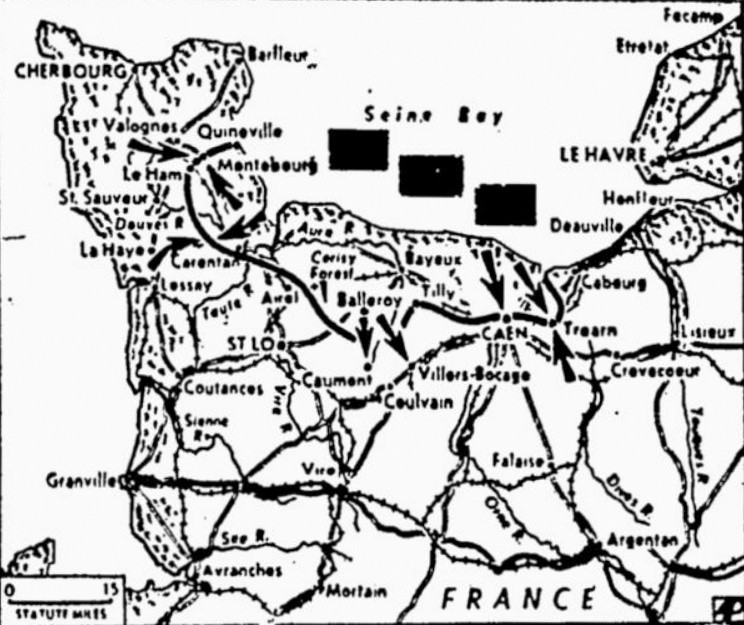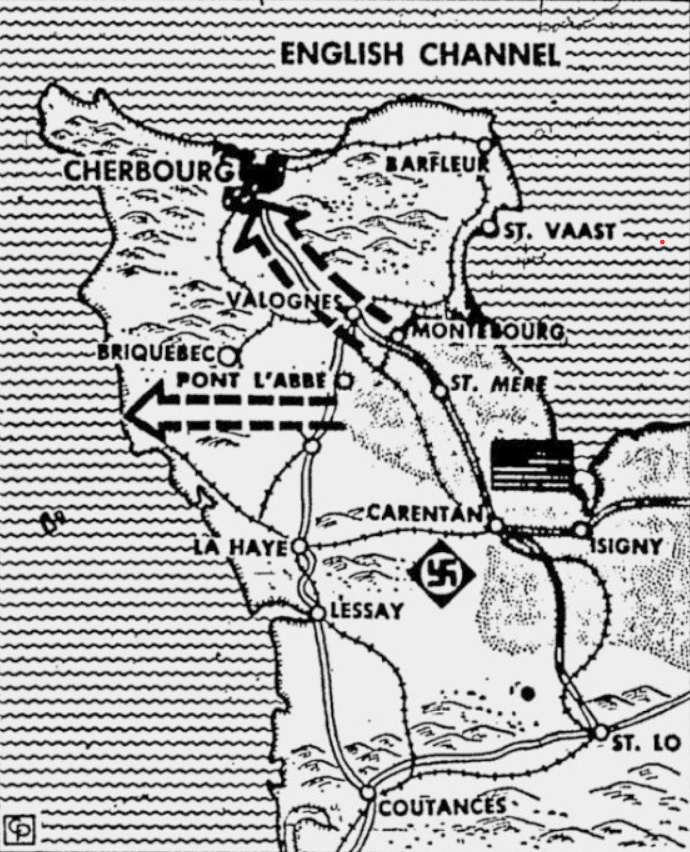Japs claim Yanks landing on Saipan
No confirmation given by U.S. task force roving in area; islands shelled
London, England (AP) –
A powerful U.S. task force, which has been harassing Japanese strongholds in the Mariana Islands since last Saturday, is now attempting to land troops on Saipan Island, the Tokyo radio declared today – a daring operation which, if successful, would give the United States an ocean base within 1,500 miles of Tokyo.
The OWI said a Japanese Imperial Headquarters communiqué announced that a landing attempt was also being made at Tinian Island in the Marianas and that “heavy fighting is in progress between Japanese units and enemy forces.”
While there was no immediate confirmation of the reported landing operation, Adm. Chester W. Nimitz disclosed yesterday in his latest communiqué that the U.S. task force was still operating off the Marianas Tuesday.
It was conceivable that the force – already credited with inflicting grievous losses on Japanese shipping and airpower – might still be operating in that area.
Ambitious venture
The first reports of U.S. offensive operations in the past have come from the Japanese on more than one occasion.
An attempt to land in the Marianas would be the most ambitious venture yet undertaken by U.S. forces in their leapfrogging progress in the Pacific, during which they have moved steadily closer to the Japanese home islands in recent months with the capture of bases in the Gilberts and Marshalls.
The landing attempt followed a series of raids carried out against Saipan and other Japanese bases in the Mariana area by a powerful Allied task force, said the broadcast.
Today’s broadcast said that attempted landings were made from a force of 20 transports which appeared off Saipan about 6:30 a.m. (local time).
About 70 landing barges and 20 or more special craft were employed in the actual landing operations, Tokyo said.
Task force assault is most sustained
USPACFLT HQ, Pearl Harbor, Hawaii (AP) –
The most sustained task force assault of the Pacific War by bombarding battleships, cruisers and destroyers and by repeated waves of carrier planes focused attention today on the Japanese-held Mariana Islands, including the former U.S. outpost of Guam.
The Marianas were the fiery core of action ranging along more than 3,000 miles from the Kurils, where another task force shelled the enemy within 500 miles of Japan, south of Palau, gateway to the Philippines.
The latest reports:
-
Extended through the fourth straight day the shelling and bombing attack on the Marianas, 1,500 miles southeast of Tokyo.
-
Disclosed a two-day task force raid on Kurils bases 1,060 miles northeast of Tokyo.
-
Made clear that Central and Southwest Pacific bombers are ganging up on Truk and Southwest Pacific planes are hammering steadily at Palau in order to prevent those two Carolines naval and air bases from interfering with the Marianas operation.
Adm. Chester W. Nimitz, in his third communiqué this week on the Marianas, said that warships, including big battlewagons, opened up their guns on Tinian and Saipan Monday and that carrier planes Tuesday prolonged the attacks they began Saturday. He gave no inkling that the operation has ended.
The warships, which had to sail more than 500 miles west of Truk and more than 1,000 miles beyond their nearest big base at Kwajalein lagoon in the Marshalls, started fires with their shells at Tanapag Harbor, the town of Garapan and the sugar mill center of Charan Kanoa on Saipan.
The communiqué said:
Our ships suffered no damage.
Also on Monday, planes from the flattops spread their attack 175 miles north of Saipan to Pagan Island where three enemy planes were downed, bringing the four-day toll to at least 144. The sinking of 13 Japanese ships, including four warships, and damaging 16 others was previously announced.


